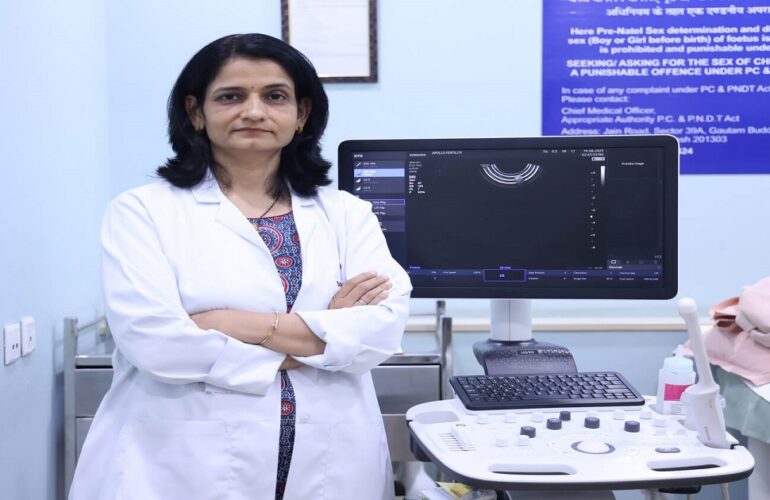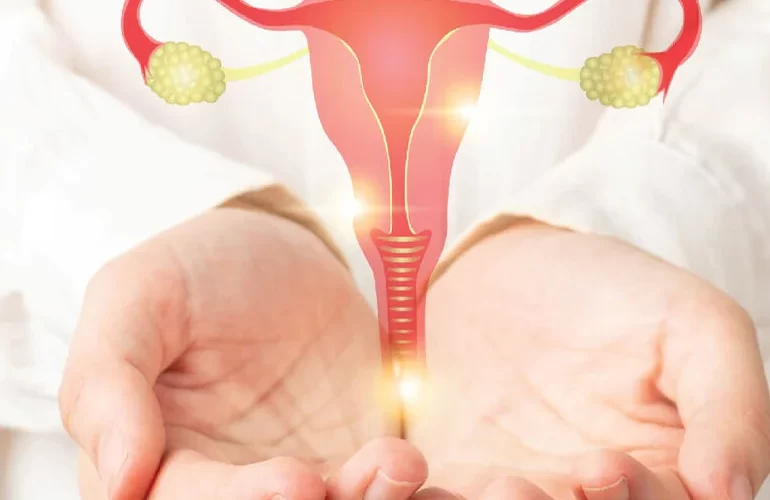Platelet Rich Plasma (PRP)
Platelet Rich Plasma (PRP) is a medical procedure that harnesses the healing properties of a patient’s own blood to promote tissue regeneration and recovery. It involves concentrating platelets, which contain growth factors, from a blood sample to stimulate natural healing processes.
Who Needs PRP?
PRP is often used in various medical fields, including orthopedics, dermatology, and fertility treatment. Individuals who may benefit from PRP include those with joint injuries, skin conditions, and fertility issues. It is particularly relevant in the context of In Vitro Fertilization (IVF).
How is PRP Done in IVF?
In IVF, PRP procedures can be a valuable addition to enhance the chances of a successful pregnancy. The procedure typically involves these steps:
- Blood Collection: A small amount of the patient’s blood is drawn, usually from the arm, similar to a standard blood test.
- Centrifugation: The collected blood is then placed in a centrifuge, a machine that spins at high speeds. This process separates the components of the blood, concentrating the platelets into a PRP solution.
- Preparation: The PRP is carefully prepared and sterilized to ensure its safety for use in IVF.
- Application: The PRP is then introduced into the uterus or the ovaries during the IVF procedure. It is thought to improve the environment for embryo implantation and support ovarian function.
How PRP Is Used for Other Fertility Treatments?
Apart from IVF, PRP can also be used in other fertility treatments, such as:
- Ovulation Induction: PRP can be injected into the ovaries to stimulate follicle development and enhance egg quality.
- Treatment of Endometrial Issues: PRP may be applied to the uterine lining to improve its thickness and receptivity for embryo implantation.
- Male Fertility: PRP can be utilized to treat male infertility by improving sperm quality and motility.
In these applications, PRP aims to optimize the reproductive environment and increase the likelihood of successful conception.
Does PRP Increase Endometrial Thickness?
Platelet Rich Plasma (PRP) has been explored as a potential treatment to increase endometrial thickness in the context of fertility treatments. Some studies suggest that PRP may stimulate the growth of the endometrial lining, which is crucial for embryo implantation during in vitro fertilization (IVF). However, the effectiveness of PRP in this regard is still a subject of ongoing research and debate within the medical community. It is essential for individuals considering PRP for this purpose to consult with their healthcare providers to understand the potential benefits and limitations.
Cost of PRP in IVF in Delhi
The cost of Platelet Rich Plasma (PRP) as an adjunct to IVF can vary in Delhi, India, depending on several factors, including the clinic or hospital chosen, the specific IVF protocol, and the number of PRP sessions required. Typically, PRP treatments involve additional expenses beyond standard IVF costs. To obtain accurate pricing information, individuals should directly contact fertility clinics or healthcare facilities in Delhi and inquire about their pricing structures and any package deals that may be available.
Success Rate of PRP in IVF in Delhi
The success rate of Platelet Rich Plasma (PRP) as a supplement to IVF in Delhi, India, can vary from patient to patient. The effectiveness of PRP in IVF depends on various factors, including the underlying fertility issues, the patient’s overall health, and the expertise of the medical team. While some studies suggest potential benefits in terms of improved embryo implantation and pregnancy rates, success rates can vary significantly. It is crucial for individuals considering PRP in IVF to discuss their specific case with a fertility specialist in Delhi to gain a better understanding of the potential outcomes.
Risks of PRP in IVF
While Platelet Rich Plasma (PRP) is generally considered safe because it uses a patient’s own blood components, there are still some potential risks associated with the procedure, particularly when used in IVF:
- Infection: Any invasive procedure carries a small risk of infection, although this risk is minimal when strict sterile techniques are followed.
- Bruising or Discomfort: Some patients may experience mild bruising, swelling, or discomfort at the injection site.
- Unproven Efficacy: The effectiveness of PRP in IVF is still a subject of ongoing research, and there is no guarantee of success.
- Cost: PRP treatments can add to the overall cost of IVF, which may not be affordable for all individuals.
Before opting for PRP in IVF, patients should have a thorough discussion with their healthcare provider to weigh the potential benefits against the risks and costs, taking into consideration their specific fertility needs and circumstances.
Benefits of PRP in IVF
Platelet Rich Plasma (PRP) can offer several potential benefits when used in conjunction with In Vitro Fertilization (IVF):
- Improved Endometrial Thickness: PRP may enhance endometrial thickness, creating a more favorable environment for embryo implantation.
- Enhanced Ovarian Function: PRP can stimulate the ovaries, potentially leading to better egg quality and increased chances of successful fertilization.
- Increased Blood Flow: PRP may improve blood circulation to the reproductive organs, supporting overall fertility.
- Reduced Risk of Miscarriage: Some studies suggest that PRP might reduce the risk of miscarriage by promoting a healthier uterine lining and embryo implantation.
Can You Get Pregnant After PRP?
Yes, it is possible to get pregnant after undergoing Platelet Rich Plasma (PRP) treatment. PRP is often used as an adjunct to fertility treatments like In Vitro Fertilization (IVF) to increase the chances of a successful pregnancy. However, the success of pregnancy depends on various factors, including the individual’s specific fertility issues, overall health, and the effectiveness of the PRP treatment in their case. It is crucial to discuss the potential outcomes and risks with a qualified fertility specialist.
How Safe is PRP Treatment?
PRP treatment is generally considered safe because it uses a patient’s own blood components, reducing the risk of allergic reactions or disease transmission. However, like any medical procedure, there are potential risks:
- Infection: Although the risk is low when proper sterile techniques are followed, there is still a small risk of infection at the injection site.
- Discomfort: Some patients may experience mild bruising, swelling, or discomfort at the injection site, but these symptoms are usually temporary.
- Unproven Efficacy: The effectiveness of PRP for specific conditions can vary, and not all patients may experience the desired outcomes.
Overall, PRP treatment’s safety depends on the individual’s health, the quality of the medical facility, and the expertise of the healthcare provider administering the treatment. Patients should consult with their healthcare provider to weigh the potential benefits against the risks.
Is PRP Painful in IVF?
The level of pain or discomfort experienced during Platelet Rich Plasma (PRP) treatment in the context of In Vitro Fertilization (IVF) can vary from person to person. The PRP injection itself is typically described as mild to moderately uncomfortable, but the discomfort is usually short-lived. Providers may use local anesthesia or numbing agents to minimize pain during the procedure. After the injection, some patients may experience mild soreness, bruising, or swelling at the injection site, but these symptoms generally resolve within a few days. Overall, while there may be some discomfort associated with PRP treatment, it is usually manageable and temporary.
Does PRP Help with Embryo Transfer?
PRP is primarily used to improve the conditions leading up to embryo transfer rather than directly impacting the transfer itself. PRP’s potential benefits lie in enhancing factors such as endometrial thickness, ovarian function, and overall uterine receptivity. These improvements aim to create a more favorable environment for embryo implantation after the transfer procedure.
Monitoring and Follow-Up After PRP
After undergoing Platelet Rich Plasma (PRP) treatment, patients typically require careful monitoring and follow-up by their healthcare provider. This helps track the progress of the treatment and ensures that any issues or complications are promptly addressed. Monitoring may include ultrasound examinations to assess the endometrial lining’s thickness and other relevant factors in the case of fertility treatments like In Vitro Fertilization (IVF).
PRP and Male Fertility
While PRP is often associated with female fertility treatments, it can also be explored as a potential option for improving male fertility. PRP may help enhance sperm quality and motility, potentially increasing the chances of successful fertilization during IVF or natural conception. However, more research is needed to establish its efficacy in male fertility treatments.
Alternative Treatments
In addition to PRP, there are various alternative treatments and interventions available for individuals experiencing fertility issues. These may include hormonal therapies, surgical procedures, lifestyle modifications, and assisted reproductive technologies (ART) other than IVF, such as intrauterine insemination (IUI). The choice of treatment depends on the specific underlying causes of infertility and the patient’s unique circumstances.
Consultation with a Fertility Specialist
For individuals considering PRP or any fertility treatment, it is crucial to consult with a qualified fertility specialist or reproductive endocrinologist. These experts can provide personalized guidance based on the individual’s medical history, fertility evaluation results, and treatment goals. They can also help patients make informed decisions about the most suitable and effective fertility treatments, including whether PRP is a viable option in their particular case.
Conclusion
Platelet-rich plasma (PRP) treatment offers potential benefits in improving fertility outcomes, especially in the context of In Vitro Fertilization (IVF) and endometrial health. However, its efficacy, safety, and applicability vary among individuals. Consulting with a fertility specialist and undergoing a thorough evaluation is essential to determine the most appropriate course of action for addressing fertility concerns.




